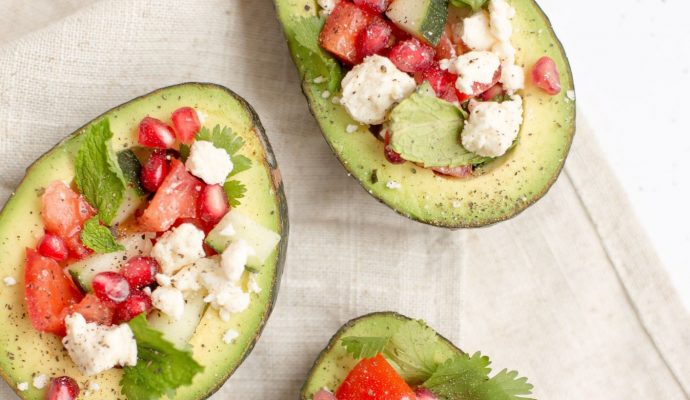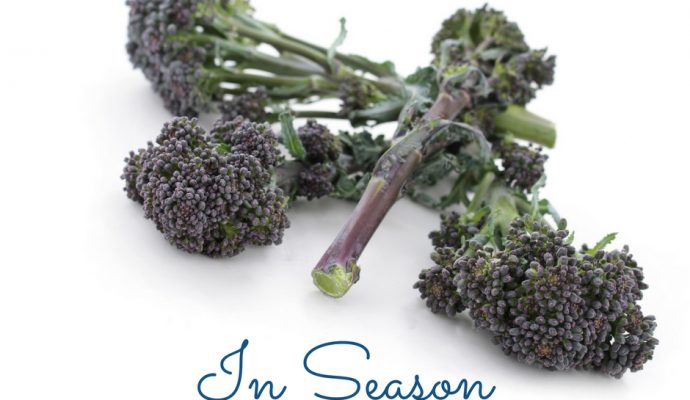Itchy, watery eyes? Constantly sneezing? Hello hay fever! Now I really know it’s spring and you’re here to stay – like an uninvited guest – for the next six months. But while Mother Nature can be cruel, she is also kind. It might surprise you to know that changing what you eat can have a big impact on the severity of your symptoms. There is a noticeable correlation between what you eat and the severity of your hay fever symptoms. For example, if you are eating food products that contain high levels of histamine, then the chances are that this additional chemical influx will be intensifying your symptoms, making them more prominent and painful than ever before.
According to Allergy UK, as many as 30% of adults and 40% of children suffer from allergic rhinitis (the medical term for the condition), an allergic reaction to pollen. You might start noticing symptoms in March when the tree pollen season starts. Then there’s the grass pollen season, followed by the weed pollen season, which can go on into September.
If this is you, I sympathise: itchy, red or watery eyes; runny or blocked nose; sneezing and coughing; itchy throat, mouth, nose and ears; loss of smell; earache; headache; and feeling exhausted.
What Happens When You Get Hay Fever?
Airborne allergic reactions occur when substances called allergens connect to allergy receptors in the nasal cavity. The body releases a compound called histamine, which in turn causes a itchiness, runny nose, sneezes, watery eyes, and headaches. Histamine acts like a bouncer at a club. It helps your body get rid of something that’s bothering you — in this case, an allergy trigger, or “allergen.” Typical allergens can include dust mites, grass, tree and weed pollen, animal dander, and (shudder) cockroach parts.
When you have allergies, some of your triggers — such as pollen, pet dander, or dust — seem harmless. But your immune system sees them as a threat and responds. Your body’s intention — to keep you safe — is good. But its overreaction gives you those all-too-familiar allergy symptoms.
There are some foods will make the symptoms of hay fever worse, so try to cut these out or reduce them as much as you can during hay fever season. Other foods are naturally anti-inflammatory, so you’ll want to ensure you’re getting plenty of these in your diet.
Foods To Avoid
Foods and drinks containing high levels of histamine can aggravate your hay fever symptoms and include chocolate and alcohol- especially wine, champagne and beer (sorry about that), tomatoes, avocados and aubergines.
Histamine is not always present in certain food products, but it can be present in the bacteria that grows around them. So, food products that are aged, preserved, or fermented like vinegar, cured meats, sauerkraut, yoghurt, miso, soy sauce, and smoked and tinned fish can often end up being a big source of histamine.
There are also foods that, while they are not high in histamine themselves, are ‘histamine liberators’ and can trigger your mast cells (allergy cells) to release histamine. These include strawberries, pineapple, bananas, citrus fruits and egg whites.
Foods containing wheat – like bread and pasta, cakes and pastries –can stimulate an allergic reaction in those who suffer from grass pollen allergies.
Dairy products like milk and cheese thicken mucus, making blocked noses or ears much worse. Matured cheeses in particular tend to contain high levels of histamine. Dairy can also be responsible for releasing histamine into your systems. Even dairy alternatives such as soya milk should be considered with caution as soya milk contains a number of proteins that can cross-react with tree pollen, thereby stimulating an allergic reaction.
One of the most overlooked ways in which histamine tolerance can be improved is through the stabilisation of blood sugar levels. In the scientific literature, it is well-established that there is a bi-directional relationship between blood sugar control and histamine levels. This means that unstable blood sugar can increase histamine levels, and that we should reduce sugar intake and also make sure we have balanced meals with protein, fat and fibre rich carbohydrates at each meal.
Foods To Add In Or Increase When You Have Hay Fever
Some foods are anti-histamine foods and disrupt or block histamine receptors in your immune system, helping to reduce allergy symptoms. These include foods that contain the plant chemicals quercetin and beta carotene, and those high in vitamin C (see below)
Local honey also may be helpful because, although it contains trace elements of pollen, over time it may help your body become more familiar with the pollen entering your system and therefore reduce the inflammatory response it makes.
Quercetin containing foods: Onions, garlic, goji berries, asparagus, all berry fruits, apples, kale, okra, peppers, plums and red grapes.
Beta carotene containing foods: Sweet potato, carrots, butternut squash, red and yellow peppers, apricots, peas, broccoli, dark leafy greens like kale, and romaine lettuce.
Vitamin C containing foods: Blackcurrants, blueberries, peppers, kale, collard leaves, broccoli, kiwis, mango, courgettes, and cauliflower.
What To Drink
Drink plenty of water. Keeping well hydrated is helpful for all aspects of health. In the case of hay fever, it helps thin the mucous membranes in your nasal passages and reduces that ‘blocked up’ feeling.
Green tea is packed full of antioxidants, which are helpful for the immune system generally. It also contains a compound called EGCG, that is capable of blocking a key receptor involved with triggering an allergic reaction.
Ginger tea has been shown to help reduce allergic reactions by lowering your body’s IgE levels (the antibody involved in the specific immune reaction associated with hay fever).
Peppermint tea is worth trying because peppermint contains menthol, a natural decongestant that may help improve sinus symptoms.
Add nettle tea to your shopping list for its ability to relieve inflammation of the upper respiratory tract and ease nasal congestion, sneezing and itching.
An Anti-inflammatory Approach
Hay fever is an inflammatory condition and may be further helped by including other types of food that calm the inflammatory response. Top of the list are foods containing anti-inflammatory omega 3 fatty acids, which I often recommend to clients struggling with any inflammatory condition. These include all types of oily fish (like salmon, trout, sardines) as well as flaxseed and walnuts.
Coconut oil or milk is also anti-inflammatory due to being rich in medium-chain triglyceride (MCT’s) and can be used in cooking and baking or added to smoothies.
As well as adding flavour to your food, herbs like parsley, sage, thyme, oregano and basil have anti-inflammatory properties as do many spices, including turmeric, ginger, cardamom, cinnamon, clove, fennel and nutmeg.
While the main problem for hay fever sufferers is the pollen itself, you may also find that hidden food intolerances are making matters worse. I offer a range of testing options at my clinic if this is something you would like to investigate further.





 Those cravings you get for sugary or savoury things, are they all in your head- or is your body trying to tell you something? Some might dismiss a ‘wisdom of the body’ theory as quackery. However, if you think about what biological processes are happening in your body and the factors affecting them, the argument to substantiate a link becomes more compelling. Here’s why.
Those cravings you get for sugary or savoury things, are they all in your head- or is your body trying to tell you something? Some might dismiss a ‘wisdom of the body’ theory as quackery. However, if you think about what biological processes are happening in your body and the factors affecting them, the argument to substantiate a link becomes more compelling. Here’s why.




